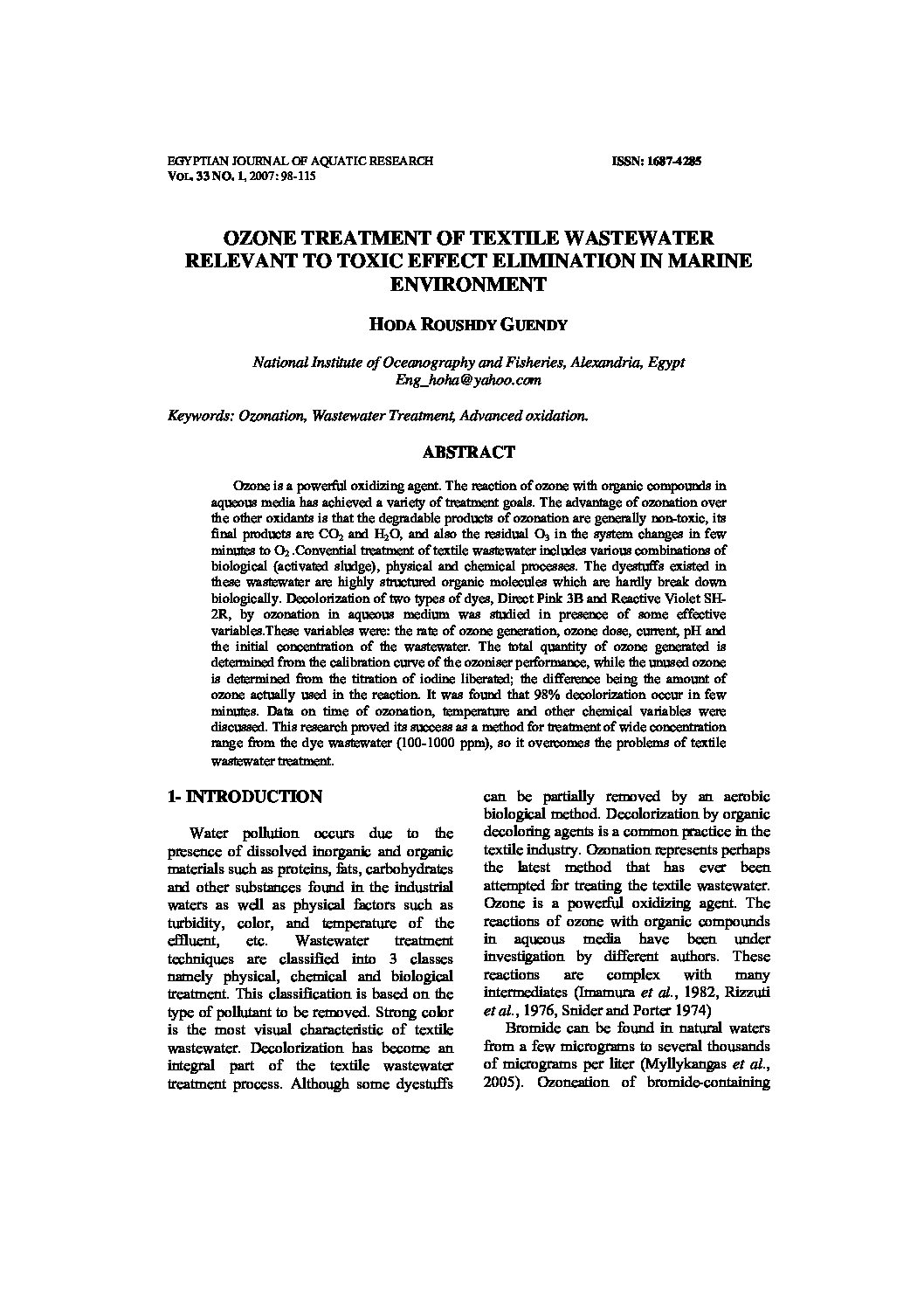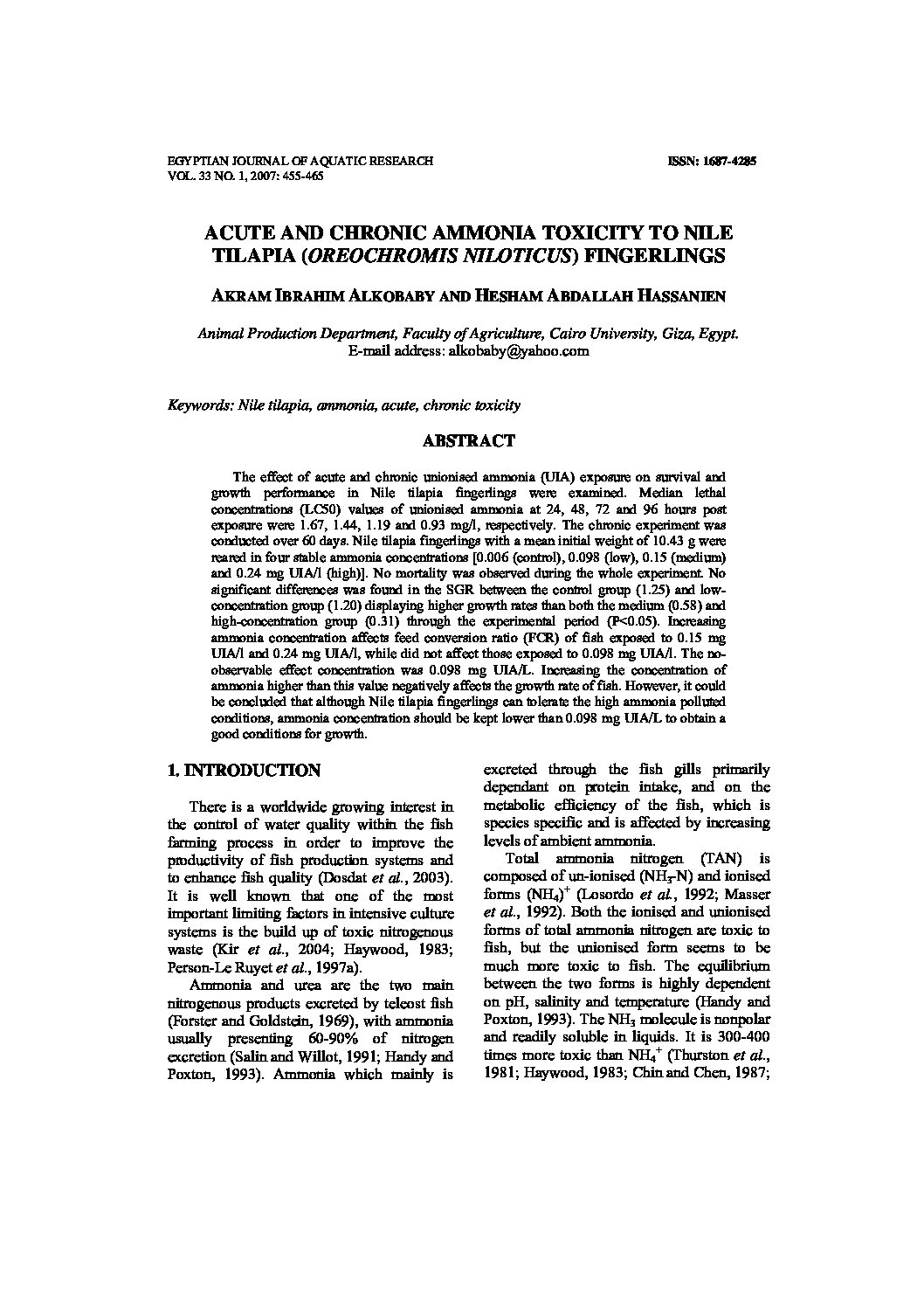Categories
vol-33OZONE TREATMENT OF TEXTILE WASTEWATER
RELEVANT TO TOXIC EFFECT ELIMINATION IN MARINE
ENVIRONMENT
HODA ROUSHDY GUENDY
National Institute of Oceanography and Fisheries, Alexandria, Egypt
[email protected]
Keywords: Ozonation, Wastewater Treatment, Advanced oxidation.
ABSTRACT
Ozone is a powerful oxidizing agent. The reaction of ozone with organic compounds in
aqueous media has achieved a variety of treatment goals. The advantage of ozonation over
the other oxidants is that the degradable products of ozonation are generally non-toxic, its
final products are CO2 and H2O, and also the residual O3 in the system changes in few
minutes to O2 .Convential treatment of textile wastewater includes various combinations of
biological (activated sludge), physical and chemical processes. The dyestuffs existed in
these wastewater are highly structured organic molecules which are hardly break down
biologically. Decolorization of two types of dyes, Direct Pink 3B and Reactive Violet SH2R, by ozonation in aqueous medium was studied in presence of some effective
variables.These variables were: the rate of ozone generation, ozone dose, current, pH and
the initial concentration of the wastewater. The total quantity of ozone generated is
determined from the calibration curve of the ozoniser performance, while the unused ozone
is determined from the titration of iodine liberated; the difference being the amount of
ozone actually used in the reaction. It was found that 98% decolorization occur in few
minutes. Data on time of ozonation, temperature and other chemical variables were
discussed. This research proved its success as a method for treatment of wide concentration
range from the dye wastewater (100-1000 ppm), so it overcomes the problems of textile
wastewater treatment.







